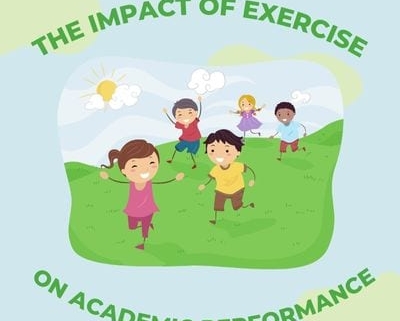The Impact of Exercise on Academic Performance
Today, we’re discussing the incredible impact of exercise on academic performance. When children and adolescents stay active, they experience higher levels of fitness, lower body fat, and stronger muscles and bones compared to those who are more sedentary.
Additionally, physical activity enhances cognitive abilities, which means improved academic performance, sharper memory, and better overall thinking skills. On top of that, it can even help alleviate symptoms of depression. So, encouraging your students to get moving is a fantastic way to support their physical and mental well-being!
The Scientific Impact of Exercise on Academic Performance
The FITKids study by Hillman et al. (2018) explored the effects of physical activity on conflict monitoring in young individuals. Conflict monitoring is the cognitive process of detecting and managing conflicting information. The findings revealed that regular physical activity has a positive impact on conflict monitoring abilities.
Improved conflict monitoring abilities can improve decision-making skills, problem-solving skills, and cognitive flexibility, which are all crucial for academic success.
In another study, Chomitz et al. (2009) investigated the association between physical fitness and academic achievement in third- and fifth-grade students. The researchers collected data on cardiovascular endurance, body mass index, and muscular strength and endurance. Academic achievement was assessed using standardized tests in reading and math.
The study revealed that students who demonstrated higher levels of physical fitness also performed better academically, particularly in the areas of reading and math. The findings also suggested that higher levels of physical fitness were associated with improved cognitive behaviors, such as attention, memory, and problem-solving skills.
Recommended Exercise Guidelines
According to the CDC, children and adolescents aged 6-17 years old should get 60 minutes or more of moderate to intense physical activity daily. Most of those 60 minutes should be spent doing a moderate to vigorous aerobic activity. Think running, bike riding, or a sport like soccer or basketball. This hour of moderate to vigorous activity should be done at least 3 days a week.
A portion of the daily 60-minute activity should also include a muscle-strengthening activity. Muscle-strengthening activities should also be done at least 3 days per week. Climbing trees or playing on a play structure with ladders, ropes, and slides are considered muscle-strengthening activities. Adolescents might consider using weight machines, resistance bands, or hand-held weights to strengthen muscles.
Part of the daily 60-minute activity should include bone-strengthening physical activities as well. Hopping, skipping, or jumping are examples of bone-strengthening activities.
Many children and adolescents likely already meet the recommended exercise guidelines by playing daily at recess, visiting parks, or participating in a sport with weekly practices.
Conclusion
It’s important for children and adolescents to build healthy habits and have an active lifestyle. Exercise has a proven positive impact on academic performance and cognitive development. Parents and guardians should encourage their students to be active every day.
If your active student needs help preparing for exams, completing homework, or just generally needs academic support, contact Hodis Learning & Music. Call us or request a call back to learn more and book your first session today!
Citations
Hillman, C. H., Pontifex, M. B., Raine, L. B., Castelli, D. M., Hall, E. E., & Kramer, A. F. (2018). Effects of the FITKids physical activity randomized controlled trial on conflict monitoring in youth.
Chomitz, V. R., Slining, M. M., McGowan, R. J., Mitchell, S. E., Dawson, G. F., & Hacker, K. A. (2009). Is there a relationship between physical fitness and academic achievement? Positive results from public school children in the northeastern United States.Centers for Disease Control and Prevention. (n.d.).
Centers for Disease Control and Prevention. (n.d.). Physical Activity Guidelines for Children and Adolescents. www.cdc.gov/healthyschools/physicalactivity/guidelines
University of Nebraska-Lincoln. (n.d.). Physical Activity: Kids and Teens. food.unl.edu/article/physical-activity-kids-and-teens



